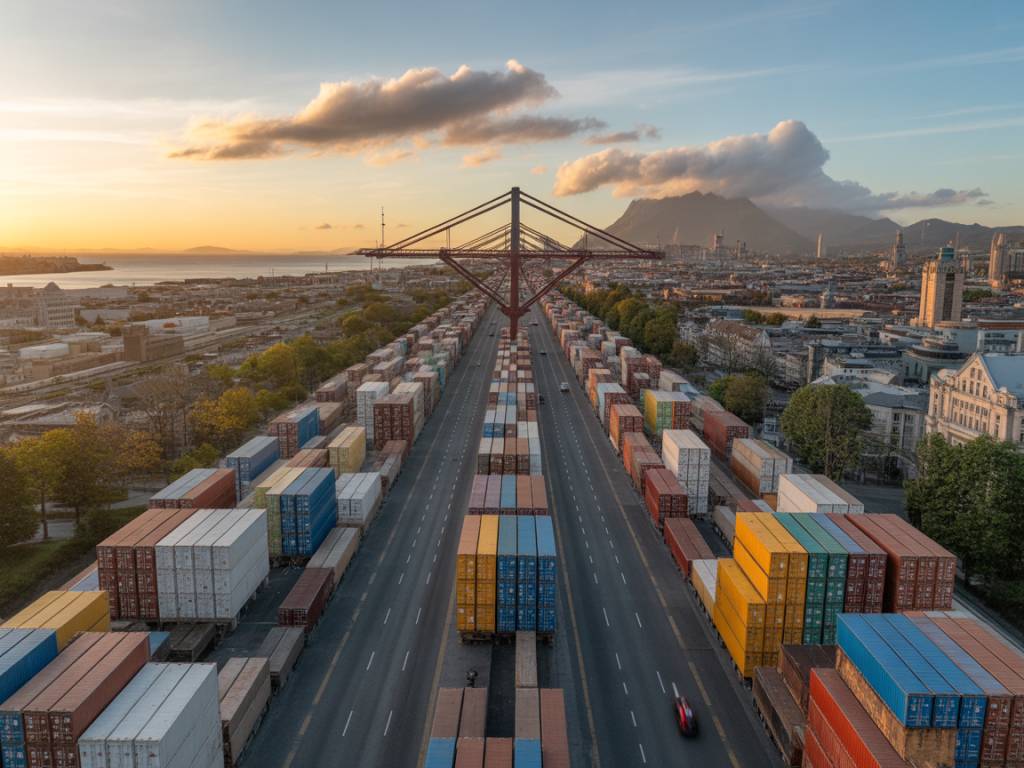Understanding Supply Chain Resilience
In today’s increasingly global and interconnected marketplace, supply chains are more vulnerable than ever to disruptions. From natural disasters and geopolitical instability to cyberattacks and pandemics, countless threats can compromise the smooth operation of logistics networks. This makes supply chain resilience not just advisable, but essential. A resilient supply chain can anticipate, prepare for, respond to, and recover from disruptions, ensuring ongoing operations and customer satisfaction.
Supply chain resilience refers to the capacity of a supply network to persist, adapt, or transform in the face of adversity. It strengthens a company’s ability to absorb shocks and maintain business continuity. With increasing focus on risk management, many organizations are investing in strategies that make their supply chains not only more efficient but also more flexible and robust.
Key Drivers Behind the Need for Resilient Supply Chains
Several driving forces have pushed resilience to the forefront of supply chain strategy:
- Globalization: The complexity of operating across multiple borders amplifies risk exposure due to longer lead times, varied regulatory environments, and reliance on international transportation modes.
- Climate Change: Extreme weather events such as floods, hurricanes, and wildfires can significantly disrupt supply lines and infrastructure.
- Health Crises: The COVID-19 pandemic highlighted the fragility of just-in-time logistics and the need for better contingency planning.
- Digital Threats: Cybersecurity roadblocks can impair supply chain software systems, leading to costly downtime and data breaches.
Strategies to Enhance Supply Chain Resilience
Developing a resilient supply chain isn’t a one-size-fits-all process. It involves a combination of strategic planning, technological adoption, and operational flexibility. Key strategies include:
Supplier Diversification
One of the foundational principles of supply chain risk management is to avoid dependency on a single source. By diversifying suppliers across different geographic locations, companies can reduce the risk of full-scale disruption.
- Establish relationships with secondary and tertiary suppliers.
- Assess supplier risk by analyzing political, environmental, and economic conditions of their regions.
- Invest in local or nearshore sourcing to balance cost and reliability.
Inventory and Safety Stock Management
Carrying buffers of critical materials and products can mitigate the impact of delays. While excessive inventory can lead to increased holding costs, strategically planned safety stock ensures availability during unexpected surges or disruptions.
- Use demand forecasting and predictive analytics tools.
- Conduct regular reviews of reorder points and safety stock levels.
- Coordinate inventory policy across the entire supply network.
End-to-End Visibility
Real-time visibility allows supply chain managers to detect abnormalities quickly and act proactively. This transparency enables rapid decision-making based on data, not guesswork.
- Implement advanced track-and-trace solutions with GPS and IoT sensors.
- Adopt supply chain management software that integrates inventory, orders, and transportation data.
- Enhance information sharing with all stakeholders including 3PLs, carriers, and suppliers.
Decentralization and Regionalization
Centralized manufacturing and distribution may provide efficiency but increase vulnerability. Decentralizing operations by building regional hubs ensures that disruptions in one area have limited impact on the overall system.
- Establish multiple distribution centers closer to end customers.
- Analyze regional demand patterns to optimize warehouse placement.
- Create contingency plans for alternate routing and replenishment.
Robust Risk Assessment and Scenario Planning
Proactive risk assessment allows businesses to identify potential threats and simulate responses. Scenario planning can prepare the organization for specific events such as port strikes, political unrest, or supplier bankruptcy.
- Map the entire supply chain, identifying critical nodes and potential failure points.
- Use digital twin technology to model and test supply chain scenarios.
- Develop emergency response protocols for each risk category.
Investing in Automation and Digital Tools
Automation not only cuts down on manual errors but also enables faster decision-making. Cloud-based platforms, artificial intelligence (AI), and machine learning (ML) allow companies to predict and respond to changes dynamically.
- Use AI for demand forecasting and inventory optimization.
- Deploy robotic process automation (RPA) in procurement and order management.
- Implement blockchain for secure and transparent transactions across the supply chain.
Workforce and Skills Development
Human factors remain crucial in supply chain resilience. Ensuring that staff across the supply chain are trained in crisis management, technology usage, and communication protocols can make a noticeable difference during a disruption.
- Run regular crisis response training and simulations.
- Develop cross-functional teams that can operate in agile modes.
- Upskill employees in data analytics, digital platforms, and lean methodologies.
Building Collaborative Relationships
Strong partnerships with suppliers, logistics providers, and customers foster a culture of trust and information sharing. When disruptions occur, collaborative networks respond faster and more effectively.
- Create vendor onboarding programs that include resilience KPIs.
- Practice transparent communication and shared risk mitigation strategies.
- Engage in joint planning, forecasting, and replenishment (CPFR) initiatives.
The Role of Sustainability in Supply Chain Resilience
Sustainability and resilience are increasingly interconnected. Sustainable practices such as using renewable materials, reducing emissions, and leveraging circular logistics not only benefit the environment but also improve long-term supply chain continuity.
- Adopt green logistics strategies including optimized routing and energy-efficient transport.
- Utilize recycled and local materials to decrease reliance on fragile global supply lines.
- Align resilience metrics with environmental, social, and governance (ESG) goals.
Moving Forward with Resilience as a Priority
From procurement to distribution, supply chains must evolve to remain reliable in an era defined by volatility. Resilience should no longer be seen as a reactive measure, but as an integral part of operational excellence. Businesses that invest in digital technologies, develop strategic partnerships, and prioritize understanding their end-to-end supply networks will be better equipped to navigate the uncertainties of tomorrow.
As a final thought, achieving resilience is not a destination—it is an ongoing journey. It involves regularly reassessing strategies, embracing innovation, and nurturing adaptability. In doing so, companies can not only survive disruptions but harness them as opportunities for growth and transformation.
